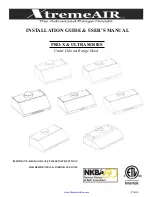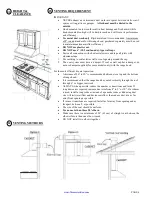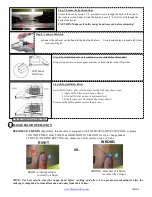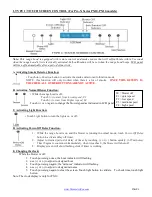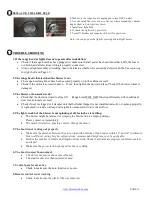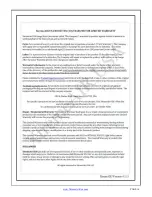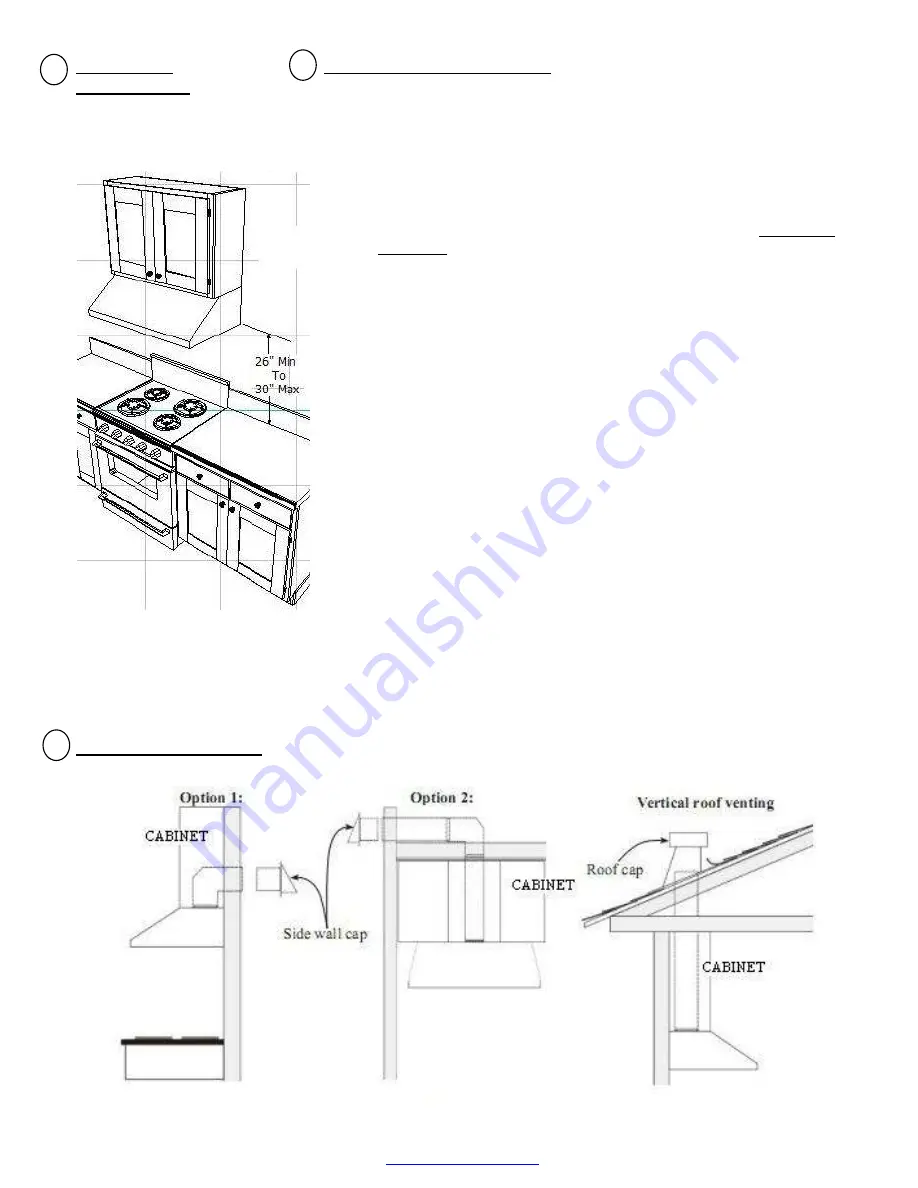
www.XtremeAirUsa.com
PAGE
4
HEIGHT &
CLEARANCE
VENTING METHODS:
VENTING REQUIREMENT
IMPORTANT:
•
NEVER exhaust air or terminate duct work into spaces between walls, crawl
spaces, ceiling, attics or garages.
All exhaust must be ducted to the
outside.
•
Hood mounted too low could result in heat damage and fire hazard; while
hoods mounted too high will be hard to reach and will loose its performance
and efficiency.
•
Use metal duct work only
. Rigid metal vent is recommended. A minimum
of 8” round (standard for this range hood, purchased separately must be used
to maintain maximum airflow efficiency
•
DO NOT use plastic vent.
•
DO NOT use 4” (10.2 cm) laundry-type wall caps
•
Fasten all connections with sheet metal screws and tape all joints with
aluminum tape.
1.
Use caulking to seal exterior wall or roof opening around the cap.
2.
The vent system must have a damper. If roof or wall cap has a damper, do
not use damper supplied (for some models only) with the range hood.
For the most efficient & quiet operation:
•
A distance of 26” to 30” is recommended between stove top and the bottom
of range hood.
•
It is recommended that the range hood be vented vertically through the roof
through 6” or bigger vent work.
•
ALWAYS, when possible, reduce the number or transitions and turns. If
long duct run is required, increase duct size from 8” to 9” or 10”. If a reducer
is used, install a long reducer instead of a pancake reducer. Reducing duct
size will restrict airflow and decrease airflow, thus reduce duct size as far
away from opening as possible.
•
If turns or transitions are required: Install as far away from opening and as
far apart, between 2, as possible.
•
The size of the vent should be uniform.
•
Use no more than three 90° elbows.
•
Make sure there is a minimum of 24” (61 cm) of straight vent between the
elbows if more than one elbow is used.
•
DO NOT install two elbows together.
02
03
04
Summary of Contents for Pro-X Series
Page 14: ...www XtremeAirUsa com PAGE 14 ...

